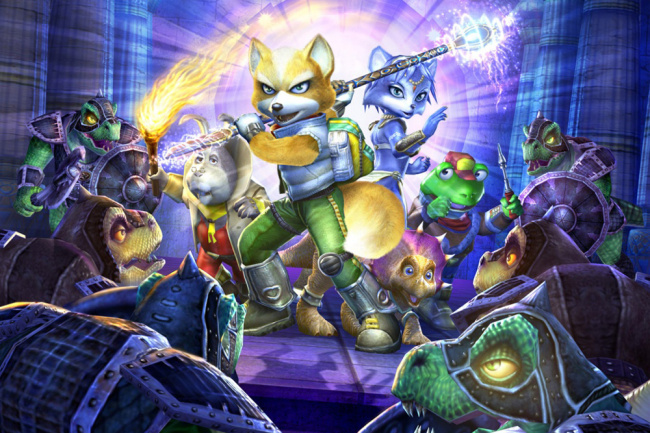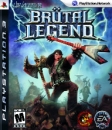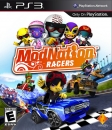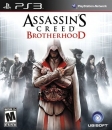A long one
Feature: The Making Of Star Fox Adventures
Posted Wed, 26 Dec 2012 | 09:00 GMT by Damien McFerran
An exclusive behind the scenes look at one of Rare’s most maligned outings

Although it’s hard to believe now, when Star Fox Adventures launched in 2002 it gained largely positive reviews and shifted 200,000 copies in Japan, making it one of the system’s early smash hits in its native region. However, history hasn’t been kind to the game; over time, its reputation has crumbled and many dedicated Nintendo fans now view it as one of Rare’s less essential titles. Of course, much of this negativity can be attributed to the fact that Star Fox Adventures was Rare’s final game as a second-party Nintendo developer - the year before its release, Microsoft paid a total of $375 million to acquire 100% of the UK-based studio, ending its astonishingly fruitful association with Nintendo.
The game’s dramatic fall from grace may also be related to the fact that it famously had the Star Fox branding added mid-way through development - prior to that, it was an N64 title by the name of Dinosaur Planet. To uncover a little more regarding the fascinating history of Rare’s one and only GameCube title, we spoke to the game’s Lead Software Engineer, Phil Tossell.

“I began working at Rare straight after I graduated from University in 1997,” explains Tossell. “I joined the Diddy Kong Racing programming team near the tail end of the project. Around that time GoldenEye 007 was just being finished off and one of my early memories was sitting next to Mark Edmonds - one of the GoldenEye programmers - in Rare’s canteen and talking with him about the game and how excited I was about it.”
When work on Diddy Kong Racing was complete, Tossell was pushed straight onto his next project: the aforementioned Dinosaur Planet. “Work began immediately after Diddy Kong Racing was finished,” he recalls. “The programming team from Diddy Kong Racing split into two, with some members - particularly Paul Mountain who had been my mentor during my first six months - going to lead the Jet Force Gemini programming team. The rest of us began work on Dinosaur Planet. I don't actually know clearly where the inspiration for the game came from; Lee Schuneman was the designer and I remember him coming up with so many ideas and sketches. The game changed many times in early development before settling down to the eventual idea of a continuous world adventure game based around two interweaved stories. For a long time Dinosaur Planet had two main protagonists - Sabre and Krystal - and you could actually swap at any time between the two by speaking to Swapstone characters. These survived the transition to Star Fox Adventures but their use changed to being Warpstones. Originally Krystal also had a sidekick character called Kyte - similar to Tricky in the final game, but a pterodactyl that could fly. The story was also quite different.”

Concept artwork for Dinosaur Planet
According to legend, Shigeru Miyamoto was shown footage of Dinosaur Planet and suggested that the game should be re-tooled to incorporate Fox McCloud and company. Rumours also abound that the change wasn’t accepted willingly by all of the Dinosaur Planet team, as the plot had to be rewritten in places to accommodate the Star Fox canon. Tossell’s recollection of this period is hazy, largely because he wasn’t directly involved with any of the high-level choices made regarding the direction of the project. “I don't know for sure where the idea originally came from, but I definitely heard it mentioned that Miyamoto-san had suggested it,” he says. “Of course we were slightly disappointed at having to change Dinosaur Planet as we had all become so attached to it, but we could also see the potential of using the Star Fox licence.” It was around the same time that the choice was made to switch development from the aging N64 to the new GameCube console.
"We were slightly disappointed at having to change Dinosaur Planet as we had all become so attached to it, but we could also see the potential of using the Star Fox licence"
With the Star Fox branding established, Tossell and the rest of the team worked tirelessly on the game with surprisingly little interference from Nintendo. “On the whole we worked very independently,” explains Tossell. “We had an initial trip to Nintendo's headquarters in Kyoto for about a week where we discussed the changes that would be required to make the game fit in well with the Star Fox universe. Sitting in a room discussing gameplay ideas with Miyamoto-san is certainly one of the highlights of my career and I still have his business card carefully stored away. I also remember going to an Italian restaurant for lunch near to the offices with Miyamoto-san and talking about all sorts of things. I'm not one to get starstruck, but that's probably the one time in my life where I felt a little bit overawed. We also met with Takaya Imamura, who is the creative mind behind Star Fox originally. Imamura-san came to stay at Rare for around a month I think, where he would work with Lee Schuneman overseeing what we were doing. I think on the whole though, Nintendo was really trusting of our ability to make a great game.”
Working under Nintendo was an eye-opening experience for Tossell, who is full of praise for the Japanese company. “Without doubt of all the time I've worked in the industry it was the most trusting and respectful relationship,” he says. “Of course, it helped because technically Rare was independent - Nintendo only owned 49% of the company, as far as I am aware. This meant that the Stamper Brothers [Rare's founders] didn't have to do anything they didn't want to. This contrasts sharply with how it is now where Microsofts own the whole company. Even accounting for that though, Nintendo knows games - its knows them inside and out and knows when something needs to be pushed and prodded and when it doesn't. And it understands that if you push and prod too much then you destroy any spark that a game may have. It's a delicate balancing act that Nintendo made look easy.”

When the game was eventually released in 2002, comparisons to The Legend of Zelda: Ocarina of Time were rife. Tossell admits that the N64 classic was most definitely an influence on Star Fox Adventures during the development period, but only during the latter part. “When we first began Dinosaur Planet, Zelda wasn't out yet, so the game had a slightly different feel,” he reveals. “But when Zelda came out, I think the designers were really inspired and amazed by it, and to a large extent we emulated a number of features. The problem was we were making Star Fox Adventures with a tiny team in comparison to Zelda; for most of development we only had five programmers, only adding more much later in development. I don't think anyone would even attempt such a large game with such a small team nowadays.”
"I think the game relied too heavily on collecting things...It was a 'feature' of a lot of Rare's games at the time and I wasn't especially a fan"
Indeed, the small number of staff working on the project meant that it ran into a number of technical challenges. “Star Fox Adventures was one of the first games to utilise a fully streaming world on a console that had a relatively small amount of memory,” explains Tossell. “Squeezing everything in and making what I still think is one of the most beautiful-looking GameCube games was a real challenge. When we first conceived the idea of a 'no-loading' world it was on the N64 which of course had cartridges, making instant loading much more straightforward. However, by the time we moved to GameCube we were faced with our first experience of a disc-based medium, which added complications. In addition, with the move to Star Fox branding we had space levels which we had never envisaged in the beginning.” Fox’s sidekick Tricky also caused headaches. “Keeping the misbehaving little dinosaur in check was a lot of work!” Tossell admits with a smile. “There was a lot of setup involved to ensure that Tricky always stayed with Fox and didn't get lost or trapped.”
Of course, as is the case with many games, things had to be removed to get Star Fox Adventures to market. Given the game’s constantly shifting focus, it’s harder than you might expect to classify what did and didn’t make the cut. “The game changed so many times during development that it was impossible to keep track of what was added and removed,” says Tossell. “I think the only thing was that we wanted to make more of the Arwing sections. These were added in fairly late and because the game had not been designed with them in mind from the beginning, it stretched some our tools beyond what they were really designed for, limiting the scope and refinement of them.” With the benefit of hindsight, Tossell is able to comment on what he would and wouldn’t include if he had the opportunity to start over again. “I think the game relied too heavily on collecting things,” he says. “It was a 'feature' of a lot of Rare's games at the time and I wasn't especially a fan. I would also have done more with the aforementioned Arwing sections if we'd had more time.”

The game was originally entitled Star Fox Adventures: Dinosaur Planet, but the second part was dropped
In many ways, the team behind Star Fox Adventures pushed the hardware and broke new ground - a remarkable feat when you consider how wet behind the ears many of them were. “As a programming team we were pretty inexperienced,” reveals Tossell. “Star Fox Adventures was the first full game that I had worked on and this was true for almost all of the programming team. Saying that though, I'm proud of the guys I worked with on Star Fox Adventures. They all worked ridiculously hard - more than was healthy at times - but I have some of my fondest game development memories from the time that I worked on the game.” To make the process even more demanding, there was also the small matter of Microsoft buying Rare mid-way through the game’s development. “The Stampers were very open about the situation, at least as much as they could be,” explains Tossell. ”I think for me it was a blessing to be working on Star Fox Adventures, because we still had a clear deadline for completion of the game and knew we had to get it done before any sale occurred; other parts of the company struggled for focus around that time because of all the uncertainty. So from our perspective it really just spurred us on to get Star Fox Adventures finished.”
"I've had plenty of people come up to me in subsequent years and say that they loved the game and didn't understand why it received so much criticism"
When the game was completed, it garnered decent early reviews but didn’t set the world alight in the way many had anticipated. “I totally understand the reaction, because many of us on the team felt the same way,” reveals Tossell when asked about the lukewarm critical reception the game received. “Personally, I knew the game had its flaws, but also it borrowed a little too heavily from Zelda, I think. It also felt a little too much like the Star Fox elements were tacked on - which of course they were! But saying all of that, I'm incredibly proud of what we achieved, especially given the amount of time and resources we had. I think some of the criticisms were unjustified and seemed to revolve around it not being a proper Star Fox game like all the others, rather than judging it on what it was. I've had plenty of people come up to me in subsequent years and say that they loved the game and didn't understand why it received so much criticism.”
Tossell would go on to assume the role of Director of Gameplay and Human–computer Interaction at Rare and work on projects such as Kameo and Kinect Sports, but left the company in 2010 to start up his own studio with two other ex-Rare employees. “I left on positive terms,” he explains. “Overall it was just a mutual acceptance that the goals I had and the goals the company had no longer matched up. And that is why it was best for me to go my own way. I left with the sole intent of setting up my own independent company called Nyamyam together with my fellow ex-Rare employees Jennifer Schneidereit and Ryo Agarie. Nyamyam was founded with the goal of creating a different kind of game. Our creative motto is: "create beautifully crafted games that both reflect who we are, and also bring a sense of wonder to the player". We are working on our first title Tengami, an adventure game for the iPad where you play a character inside a pop-up book; the whole game world is built from pop-up elements. It's a very gentle, reflective game with a unique minimalistic art style inspired by traditional Japanese craftsmanship. We hope to finish the game by June 2013.”

As we revealed recently, Nintendo’s Wii U is very much on Nyamyam’s radar. “We've been keeping an eye on the Wii U with interest,” Tossell says. “I think initially we weren't sure whether it would be a match for the kind of games we wanted to make, but recently we were contacted by Nintendo about the possibility bringing Tengami to the eShop, so we've been looking at how feasible that is. We're only three full-time developers at Nyamyam so we have to consider each platform carefully. But yes, we would love to bring Tengami to the Wii U. It would feel like something of a homecoming for me, personally.”
Tossell’s future as an independent developer is looking very bright indeed, with Tengami gaining plenty of attention from within the industry. However, looking back to the past for a moment, what does he think about the perception that his former employer has lost its way in recent years? There's a pause. “It's difficult to answer this,” he eventually replies. “In many ways, for me, Rare doesn't exist any more. That is the Rare that I knew and loved and that I got up every morning like an excited child to go to work for. The Rare that I spent far too many hours at and yet never resented one bit. The Rare where all my friends were, most of whom are no longer there. And so that Rare doesn't exist any more. The Rare that does exist is a new Rare, an evolved Rare with different goals and different aims, and I think and hope that they will go on and continue to thrive in their own way. Kinect Sports was my final game at Rare and if you look past the kind of game it is, it still bears all the hallmarks of a quality, polished game that Rare was known for. I look forward to seeing what they do next.”

This Dinosaur Planet sculpture used to stand in the reception at Rare's UK HQ
Irrespective of the manner in which Star Fox Adventures is viewed by the gaming public of today, it’s abundantly clear that Tossell enjoyed every minute of its tumultuous and chaotic development. “I'd like to thank all of the Star Fox Adventures team,” he states when asked if he has any final words to close the interview. “Working with the guys and gals was an amazing experience and something I'll never forget. I'd especially like to thank the programming team: Nik, Nick, Cliff, Phil, Ray, Brendan, Graham and Andy. Thanks for great times, your incredibly hard work and your patience with my inexperience!”
http://www.nintendolife.com/news/2012/12/feature_the_making_of_star_fox_adventures






























 ) The only irritating thing was that Fox' animations were identical with those of Krystal which made Fox move like a diva at times haha
) The only irritating thing was that Fox' animations were identical with those of Krystal which made Fox move like a diva at times haha 



























